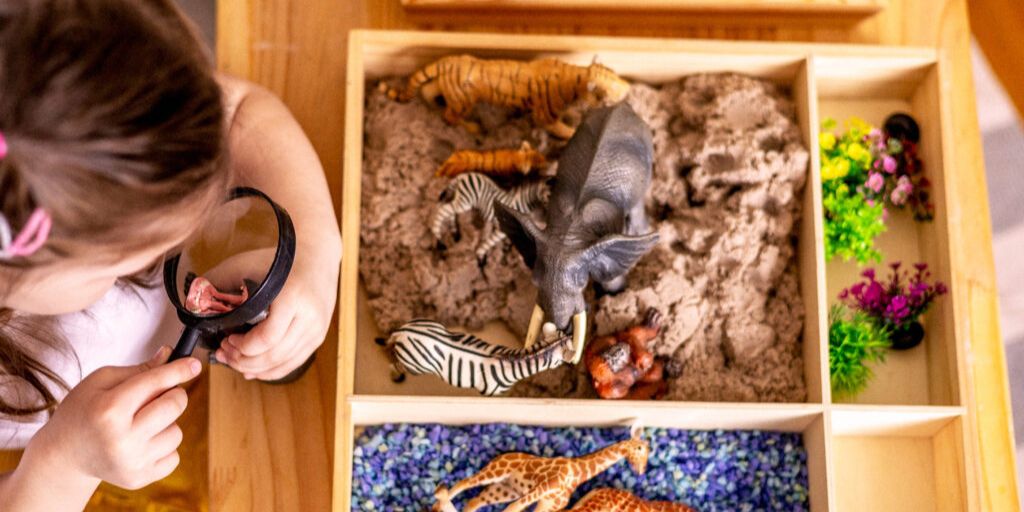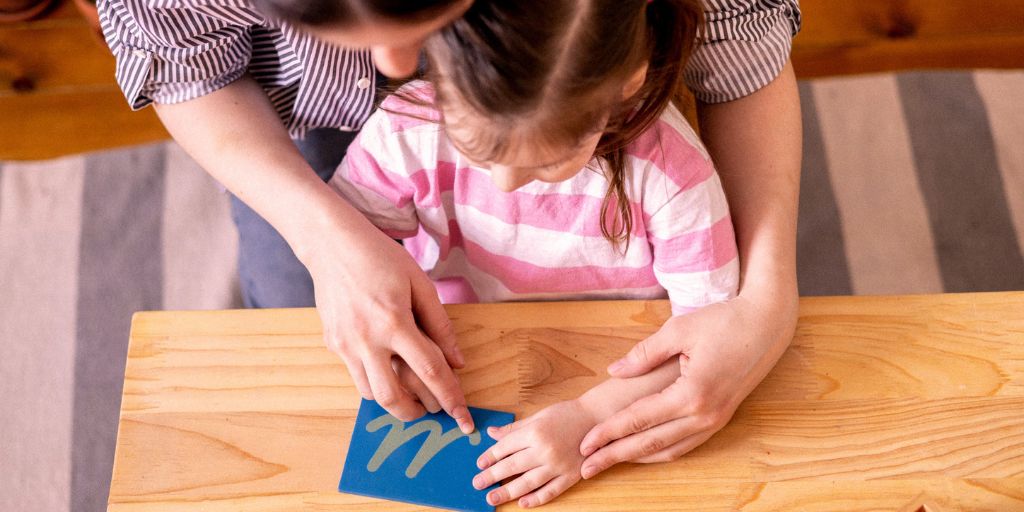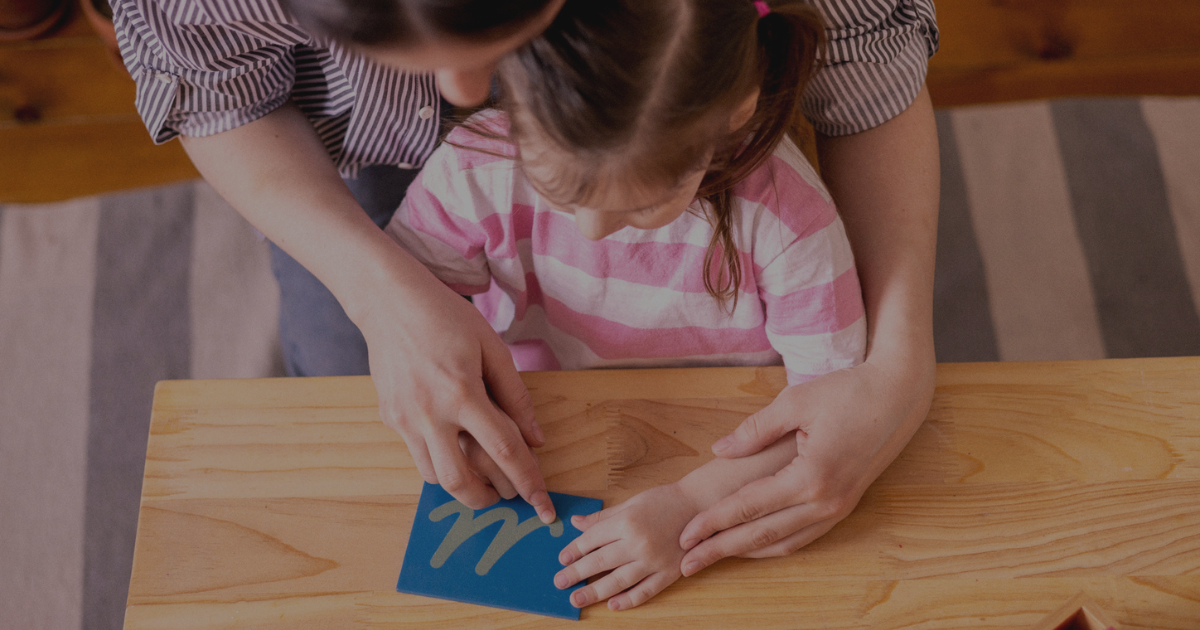Various teaching methodologies have emerged in education, each with its unique approach and philosophy. One such method that has gained widespread recognition and acclaim is the Montessori Method. If you're wondering what is a Montessori school, you've come to the right place. Developed by Dr. Maria Montessori in the early 20th century, this approach to education strongly emphasises nurturing independence, self-directed learning, and the holistic development of children. In this blog post, we will delve into the Montessori Method to understand its principles, practices, and the profound impact it has had on early childhood education.
The Origins of Montessori
The Montessori Method was born out of the pioneering work of Dr. Maria Montessori, an Italian physician and educator, in the early 1900s. Dr. Montessori's groundbreaking insights into child development were influenced by her observations of children with developmental disabilities. She recognised that traditional education methods were not adequately meeting the needs of these children and embarked on a journey to create a more practical approach.

What is Montessori theory?
- Respect for the Child: Central to the Montessori philosophy is a deep respect for the child with unique interests, abilities, and potential. Educators believe that each child has an innate desire to learn and that the teacher's role is to nurture this natural curiosity.
- Self-Directed Learning: In a Montessori classroom, children can choose their activities and work independently. Teachers act as guides, providing materials and support when needed, but the primary focus is on allowing children to explore subjects that interest them.
- Prepared Environment: Montessori classrooms are carefully designed environments conducive to learning and exploration. They feature many hands-on, age-appropriate materials that promote sensory exploration, fine motor skills development, and intellectual growth.
- Mixed-Age Groups: Montessori classrooms typically include students of different ages, fostering a sense of community and collaboration. This approach allows younger children to learn from their older peers and vice versa.
- Freedom within Limits: While Montessori students have a considerable degree of freedom to choose their activities, this freedom is balanced by clear boundaries and rules. This structure helps children develop self-discipline and respect for others.
- Individualised Learning: Teachers in Montessori classrooms closely observe each child's progress and tailor their lessons and materials to meet individual needs and interests. This personalised approach ensures that no child is left behind or held back.
What is a Montessori School?
A Montessori school is an educational institution that follows the principles and methods of the Montessori Method, an innovative educational approach developed by Dr. Maria Montessori in the early 20th century. Montessori schools are known for providing a unique and child-centred learning environment, primarily focused on the early years of a child's education, typically from preschool to age 6. However, some Montessori schools may offer programs for older children as well.
How much are Montessori schools?
The cost of Montessori education can fluctuate significantly based on various factors, including the school's location, the child's age, the specific program offered, and additional services provided. Let's delve deeper into these factors to understand how they contribute to the varying costs of Montessori schools in the UK. On average, in the U.K., you should expect to pay between £1500-£3500 per month for children under three and between £1000-£2500 per month for children aged 3-5 years old.
- Location: The geographical location of a Montessori school plays a pivotal role in determining its tuition fees. In metropolitan areas like London and other major cities, where the cost of living is generally higher, Montessori schools may command higher fees. In contrast, schools in rural or less expensive regions may offer more affordable rates.
- Age of the Child: Montessori schools often have different programs for various age groups, such as infants and toddlers, preschoolers, and elementary school-age children. The tuition fees typically increase as children move through these different stages of education. For instance, programs for children under three years old might have a higher fee range, while those for children aged 3-5 might be relatively lower.
- Full-Day vs. Half-Day Programs: Montessori schools may offer both full-day and half-day programs. Full-day programs, which provide care and education throughout the day, usually have higher monthly costs than half-day programs, which have shorter hours.
- Additional Services: Some Montessori schools offer extended care services, including before and after-school care. While convenient for working parents, these other services may come with extra charges, further impacting the overall cost of education.
- Materials and Resources: Montessori classrooms have specialised learning materials designed to support the Montessori Method. Some schools may include the cost of these materials in their tuition fees, while others might charge additional fees for their use or purchase.
- Teacher Qualifications and Experience: The expertise and qualifications of Montessori teachers can influence the cost of education. Schools with highly trained and experienced Montessori educators may charge higher tuition fees to compensate for staff salaries and professional development.
- Facility and Amenities: The quality of a school's facilities, including the classroom environment, outdoor spaces, and additional amenities, can impact the overall tuition cost. Schools with state-of-the-art facilities may charge higher fees to cover maintenance and upkeep.
- Financial Aid and Scholarships: It's worth noting that some Montessori schools in the U.K. offer financial aid or scholarships to families with limited financial means. These programs can help make Montessori education more accessible to a broader range of students.
What is the Montessori method of learning?
- Practical Life Activities: These activities, such as pouring, sweeping, and buttoning, help children develop fine and gross motor skills, as well as a sense of independence and responsibility.
- Sensorial Materials: Montessori classrooms include materials that engage the senses, allowing children to explore concepts like size, shape, colour, and texture in a hands-on manner.
- Language and Maths Materials: Montessori materials for language and maths are designed to provide concrete, tactile experiences that build a strong foundation for later academic learning.
- Cultural and Science Exploration: Children are exposed to various subjects, including geography, history, and biology, through engaging materials and activities.
- Freedom to Explore: Montessori classrooms allow children to follow their interests, whether it's in art, science, music, or any other area of study. This fosters a lifelong love of learning.

What is a typical day in a Montessori classroom?
A typical day in a Montessori classroom is structured to provide a well-rounded, child-centred educational experience that fosters independence, exploration, and a love of learning. While the exact schedule can vary depending on the age group of the children and the specific Montessori school, here's a general outline of what you might expect to see in a Montessori classroom:
- Morning Arrival: Children arrive at the Montessori classroom, often greeted by their teachers or classmates. Some Montessori schools encourage a calm, unhurried start to the day, allowing children to transition smoothly into the classroom environment.
- Choice of Activities: One of the hallmarks of Montessori education is the freedom to choose activities. Children are encouraged to select their work from a range of materials displayed on shelves. These materials cover various subjects, including practical life skills, mathematics, language, science, and cultural studies.
- Work Period: The day's core is the work period, during which children engage in self-directed activities. They may work alone or with a small group of peers. Teachers act as guides, providing individualised support and lessons as needed. Children can move around the classroom, selecting activities that interest them.
- Snack and Social Time: Depending on the schedule, there may be a designated snack or lunchtime when children come together to eat and socialise. This time promotes social skills, independence (as children often help prepare their snacks), and healthy eating habits.
- Outdoor Play: Many Montessori classrooms incorporate outdoor playtime to allow children to explore and play in a natural environment. Outdoor play promotes physical development, sensory experiences, and a connection to the natural world.
- Group Activities: Besides individual work, Montessori classrooms often include group activities such as circle time, where children gather for stories, songs, discussions, or lessons on topics of interest. Group activities encourage cooperation, communication, and community building.
- Specialist Classes: Some Montessori schools offer specialist classes in subjects like art, music, or physical education. These classes provide a well-rounded education and allow children to explore their interests in various domains.
- Reflection and Cleanup: At the end of the work period, children are encouraged to reflect on their activities, put away materials, and clean up their workspaces. This promotes responsibility, organisation, and respect for the classroom environment.
- Closing Circle: The day often ends with a closing circle, during which children may share what they've learned, discuss their experiences, or engage in a brief mindfulness or gratitude exercise.
- Dismissal: Children are gradually dismissed from the classroom to return home or participate in after-school programs or extended care services if offered by the school.
Montessori teachers observe and assess each child's progress throughout the day, ensuring they receive individualised guidance and support. The classroom environment is carefully designed to encourage independence, exploration, and hands-on learning, with self-correcting materials to promote deep understanding.
It's important to note that Montessori classrooms often have a daily routine that balances structured and unstructured time, allowing children to follow their interests and work independently while participating in group activities and lessons. This approach fosters a love of learning and helps children develop critical life skills beyond academic knowledge.
What is an example of the Montessori method of teaching?
One of the key principles of the Montessori Method is the use of specially designed learning materials and activities that allow children to engage in hands-on, self-directed learning. These materials are carefully crafted to help children explore and understand abstract concepts in a concrete and tangible way. Let's look at an example of a Montessori activity related to mathematics:
Example: Montessori Math Materials - The Golden Beads
In a Montessori classroom, you might find a set of materials called "Golden Beads." These materials teach children fundamental mathematical concepts, including place value, addition, subtraction, multiplication, and division.
Here's how the Golden Beads activity works:
- Introduction to Quantity: Before diving into mathematical operations, children are introduced to quantity using the Golden Beads. Each bead represents a unit: a single bead represents one, a bar of ten beads represents ten, a square of a hundred beads represents one hundred, and a cube of a thousand beads represents one thousand.
- Place Value: Children learn the importance of place value as they work with the Golden Beads. They see that arranging ten single beads in a bar represents ten, ten bars stacked together represent one hundred, and so on. This visual representation helps them grasp the concept of place value more efficiently.
- Addition: Children can perform addition using the Golden Beads by physically combining the appropriate quantity of beads. For example, to add 4 and 7, they take four and seven single beads and put them together to form one bar and one square, representing 11.
- Subtraction: Similarly, subtraction can be demonstrated by removing beads to show the concept of "taking away" or "subtracting" from a quantity.
- Multiplication and Division: Once children have a solid understanding of addition and subtraction, they can use the Golden Beads to explore multiplication and division as well. They can build arrays or groups of beads to represent multiplication and divide quantities to understand division.
The Montessori Golden Beads activity is just one example of how Montessori materials make abstract mathematical concepts concrete and accessible to young learners. By engaging in these hands-on activities, children acquire mathematical skills and develop problem-solving abilities, a deep understanding of mathematical principles, and a sense of accomplishment through self-directed learning. This approach illustrates how the Montessori Method encourages active exploration, discovery, and a deep understanding of concepts while respecting the child's pace and interests. It's a powerful example of Montessori education fostering independent and joyful learning.

What is the difference between a Montessori and a nursery?
Montessori schools and nurseries both provide early childhood education and care for young children, but they have distinct differences in philosophy, approach, and educational methods. Here are some key distinctions between Montessori and traditional nursery or preschool settings:
- Educational Philosophy:
- Montessori: Montessori education is based on the philosophy developed by Dr. Maria Montessori, which emphasises child-centred learning, independence, and self-directed exploration. The Montessori approach views children as active learners who are naturally curious and capable of taking charge of their education.
- Nursery/Preschool: Traditional nurseries and preschools may follow various educational philosophies, but they typically provide structured activities and playtime under the supervision of teachers or caregivers. The focus may be on socialisation, basic pre-academic skills, and routines.
- Curriculum and Materials:
- Montessori: Montessori classrooms are equipped with carefully designed, hands-on learning materials that promote independent learning in practical life skills, mathematics, language, science, and cultural studies. Children choose their activities based on their interests and readiness.
- Nursery/Preschool: Traditional nurseries and preschools often use a more standardised curriculum that may include structured lessons, crafts, and teacher-led activities. The emphasis may be on preparing children for formal schooling.
- Teacher Role:
- Montessori: Montessori teachers (often referred to as guides) act as facilitators and observers. They provide individualised lessons and support based on each child's developmental stage and interests.
- Nursery/Preschool: Teachers in traditional settings typically lead group activities, provide instructions, and manage classroom routines. Their role is often more directive.
- Age Range:
- Montessori: Montessori education is often available for children from as young as 18 months to 6 years old, although some Montessori schools offer programs for older children as well.
- Nursery/Preschool: Nurseries and preschools may cater to a wide age range, starting with infants and toddlers and extending up to kindergarten-aged children.
- Mixed-Age Groups:
- Montessori: Montessori classrooms often have mixed-age groups, where children of different ages interact and learn together. This promotes peer learning, cooperation, and mentorship.
- Nursery/Preschool: Traditional settings typically group children by age, with each class consisting of children of a similar age.
- Assessment and Evaluation:
- Montessori: Assessment in Montessori education is often based on careful observation of a child's progress rather than traditional testing or grading. The focus is on the child's individual development and readiness.
- Nursery/Preschool: Traditional settings may use more formal assessments and evaluations to track children's progress and readiness for formal schooling.
- Learning Environment:
- Montessori: Montessori classrooms are carefully prepared environments with specific learning materials that encourage independent exploration and discovery.
- Nursery/Preschool: Traditional settings may have a more typical classroom layout with desks, chairs, and age-appropriate toys.
It's essential to note that both Montessori and traditional nursery or preschool settings can offer valuable early childhood education experiences. The choice between them often depends on a family's educational philosophy, goals, and their child's unique needs. Some parents may prefer Montessori's child-led, holistic approach, while others may opt for the structure and socialisation opportunities of a traditional nursery or preschool program.
Is Montessori Recognised in the UK?
Yes, Montessori education is recognised and widely accepted in the United Kingdom. Montessori schools and programs in the UK are subject to regulations and standards set by government agencies, just like any other educational institution. Here are some key points regarding the recognition of Montessori education in the UK:
- Ofsted Registration: Many Montessori schools in the UK are registered with the Office for Standards in Education, Children's Services, and Skills (Ofsted). Ofsted is the government agency responsible for inspecting and regulating early years and education providers in England. Montessori schools registered with Ofsted must adhere to specific standards and undergo regular inspections to ensure they meet quality and safety requirements.
- Early Years Foundation Stage (EYFS): Montessori early years settings often follow the Early Years Foundation Stage (EYFS) framework, which is a government-approved curriculum for children from birth to five years old in England. The EYFS framework sets early childhood education and childcare standards and is commonly used in Montessori nurseries and preschools.
- Montessori Schools' Accreditation: Some Montessori schools in the UK are accredited by recognised Montessori organisations, such as the Montessori Evaluation and Accreditation Board (MEAB). Accreditation by these organisations ensures that a Montessori school adheres to Montessori principles and standards of practice.
- Independent Montessori Schools: Besides Montessori programs in mainstream education, there are many independent Montessori schools in the UK. These schools offer Montessori education from early years through primary education and sometimes even beyond. While they may not be directly affiliated with the government, they follow Montessori principles and provide recognised educational programs.
- Teacher Training: The UK offers Montessori teacher training courses recognised by education authorities. Teachers who complete these courses can work in Montessori schools and other early years settings.
It's important for parents seeking Montessori education for their children in the UK to ensure that the chosen Montessori school or program complies with relevant regulations and standards. This can involve checking if the school is registered with Ofsted, in the case of early years settings, or verifying accreditation from Montessori organisations for independent Montessori schools.
Overall, Montessori education is well-regarded in the UK and is a popular choice for parents seeking a child-centred, hands-on approach to early childhood education.
Is Montessori good for ADHD?
Montessori education is often considered a beneficial option for children with ADHD (Attention Deficit Hyperactivity Disorder) due to its child-centred, individualised, and holistic approach to learning. While Montessori schools are not explicitly designed for children with ADHD, the principles and practices of Montessori education can align well with the needs and strengths of many children with ADHD.
Is Montessori good for autism?
Montessori education can be beneficial for some children with autism spectrum disorder (ASD), but its effectiveness may vary depending on the individual needs and characteristics of the child. Montessori classrooms offer a child-centred, sensory-rich, and structured environment that aligns with some of the principles that can be supportive for children with autism.
Become a practitioner with a Montessori Course
If we've piqued your interest, there is a straightforward way to become a Montessori nursery nurse. Looking after children is a fulfilling and rewarding career. Oxbridge offers a Montessori Course, should you consider working in a Montessori setting. At the time of writing, it's the only online one available in the U.K.
Benefits of Montessori education
The Montessori Method has profoundly impacted early childhood education, inspiring educators worldwide to adopt its principles and practices. By prioritising respect for the child, self-directed learning, and individualised instruction, Montessori education empowers children to become confident, independent learners who are well-prepared for future challenges. Whether you are a parent seeking an alternative to traditional education or an educator looking for innovative teaching methods, the Montessori Method offers valuable insights into nurturing the potential within every child.
